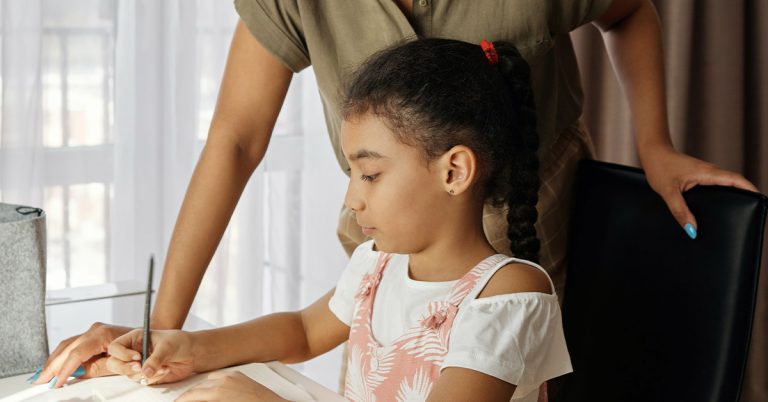With increased demands both within educational institutions and outside of them, many children with some form of learning disorder fall behind with regard to their peers, which often results in a significantly poorer academic achievement.
What are learning disabilities?
Learning disabilities or learning disorders encompass a wide spectrum of issues that affect a person’s ability to accept and process information. Namely, learning disorders occur as the consequence of poor connectivity (of neurons) in the brain which directly obstruct the acquisition of basic knowledge at school such as: reading, writing, and solving mathematical problems. Children with learning disabilities often have to live with the knowledge that there is a gaping rift between them and their peers, due to their failure to meet the expected school norms based on age and academic performance.
What can cause a learning disability?
Although there is no single, specific reason for learning disabilities, they are often caused by a combination of different factors. Some of the potential causes include:
- Heredity: Many studies suggest that children whose parents were diagnosed with some form of learning disability are more likely to inherit them.
- Prenatal maternal stress: Maternal stress during pregnancy has been identified as the key factor in the development of the child’s brain. Infants whose mothers were continuously exposed to increased stress levels have significantly higher levels of cortisol in their blood even three months after birth.
- Exposure to alcohol or drugs during the prenatal period: Exposure of the fetus to alcohol and/or drugs in the prenatal period retards fetal growth, and consequently, the growth of their brain, and may even cause preterm labor.
- Psychological trauma – psychological abuse in early childhood negatively affects the development of the child’s mental abilities, from the occurrence of early childhood mental health problems, to an increased likelihood of learning disabilities. It should be noted that learning disabilities and disorders should not be equated with mental health problems. Namely, a learning disability/disorder is a permanent condition that develops in early childhood, whereas a mental illness/disorder can develop at any stage of a person’s life, but is curable. Therefore, learning disabilities cannot be cured, although there are drugs and treatments that help manage them and allow children with these disorders to master everyday challenges.
- Physical trauma – Any form of head injury in early childhood can affect the brain and the nervous system, playing a significant role in the occurrence of learning disabilities in children.
- Behavioral environment – Although children do not necessarily inherit their parents’ genes, they will still adopt certain behavioral patterns from their parents through imitation that can be associated with the onset of some form of learning disorder later in life.
Facts and stats about learning disabilities
Thanks to various studies, we have gradually made a broader and clearer picture of what it means to have a learning disorder. Namely, teachers have been able to diagnose and categorize learning difficulties in children more easily in the last 20 years. However, despite the implementation of new detection methods, the number of children with learning difficulties have been growing steadily. The fact is that one in every ten children between the ages of 3 and 17 in the US faces some form of learning difficulty, which sounds alarming for future generations.
Key data from 2020 shows the increase of recorded cases of learning disabilities in children.
- Over 15% of children have dyslexia
- 9.4% of children in the US are diagnosed with ADHD
- 3-6% of students have dyscalculia
- 6% of children suffer from dyspraxia
- Children with learning disabilities are 3 times more likely to drop out of school
- Demand for special education increased by 13%
- The occurrence of learning disabilities is common in low-socioeconomic status households
- Only 46% of adults with learning disabilities are employed
What are the early signs and symptoms of a learning disorder/disability?
There is a wide range of signs that indicate a learning disability. Specifically, these are often associated with reading, reading comprehension, written expressions, spelling, solving math problems, spoken language, as well as hyperactivity, attention deficit and lack of attention, the last two not necessarily being indicators of a learning disability. However, the characteristic that does point to the occurrence (existence) of a learning disability is a significant disparity between the child’s achievements in some areas (e.g. school) and their intelligence, i.e. IQ.
Here are some of the signs that indicate a learning disability/disorder:
- Poor performance on group tests
- Hyperactivity
- Attention deficit
- Impulsivity
- Emotional ability
- Low tolerance for frustration
- Perceptual-motor impairments
- Slowness in completing work
- Poor short-term or long term memory
- Reversal letters and words in writing and reading
- Social skills deficits or poor social judgment
- Poor adjustment to environment changes
- Easily confused by instructions
- Language deficits
- Disorders of memory and thinking
- Coordination problems
- Disorganized thinking
- Difficulty copying accurately from a model
- Difficulty discriminating size, shape, color
- Difficulty with temporal (time) concepts
- Difficulty with abstract reasoning and/or problem solving
Types of learning disabilities and disorders
Just as there is no single cause for learning disabilities, it is impossible to pinpoint a single learning disability that causes poor academic performance overall. A learning disability is commonly manifested in the form of several disorders the correlation of which leads to difficulties in learning. Below is a list of learning disabilities, as well as disorders that are often classified among related causes by the Learning Disability Association of America.
The umbrella of learning disabilities
Dyslexia
Dyslexia is the most common type of learning disability and it affects a child’s reading, writing and language-based processing. It is characterized by difficulties in pronouncing and coordinating individual words, due to the inability to recognize sounds, as well as their correlation with letters and words.
Dysgraphia
Learning disability manifested as difficulties with spelling, illegible handwriting, omitting letters, spacing between words, and mixing uppercase and lowercase letters.
Dyscalculia
Specific learning disability that affects the child’s ability to understand arithmetic, perform number-based operations, understand/memorize numbers and learn mathematical facts.
Nonverbal Learning Disabilities
A spectrum of neurological disorders that originate in the right brain hemisphere, causing challenges with spatial, organizational and evaluative processing.
Processing disorders
Visual Processing, or Perceptual Disorder
Hindered ability to make sense of the information taken in through the senses. Sensory data is often degraded due to defects in visual processing.
Auditory Processing Disorder
Persons with auditory processing disorder have trouble processing sounds they hear. Namely, the brain of people with APD incorrectly interprets the information received and processed by the ears. The most common problems that people with APD face include:
- Mixing/confusing the order of sounds
- Inability to filter between different sounds heard at the same time, e.g. sound of the teacher’s voice and background noise
Language Processing Disorder
LPD is an impairment that negatively affects communication through spoken language. There are two types of this disorder – people with expressive language disorder have trouble expressing their thoughts clearly, whereas those with receptive language disorder have difficulty understanding others.
Related disorders
ADHD (Attention deficit hyperactivity disorder)
Disorder that causes enormous hyperactivity, impulsiveness and inability to pay attention and maintain focus. Although it doesn’t necessarily belong to learning disorders, it is often counted among related learning problems.
Dyspraxia
Dyspraxia is a disorder that occurs in the brain, causing problems with motor skills, such as movement, coordination and speech. It does not affect one’s intelligence, but depending on its severity, it can significantly affect cognitive skills.
Autism
Autism is a developmental disorder characterized by challenges with social interaction and communication, as well as repetitive and limited (habitual) behavior. The fact that 40% of people diagnosed with some form of autism also have a learning disorder should be a signal that there could be a causal link between the two disorders.
Treatment for learning disorders
Before we discuss approaches in the treatment of learning disorders, it should be noted that learning disorders are permanent conditions that cannot be cured, but they can be treated, managed and minimized. Namely, the only thing that has proven useful so far is early intervention, because it can prevent the snowball effect. So, by preparing the child in advance for the challenges that lie ahead, such as reading, algebra/arithmetic, writing, etc. can prevent a lack of self-confidence, anxiety, chronic fatigue, a feeling of inferiority, or loss of motivation in learning.
Some general approaches in the treatment of learning disorders, as well as tips for parents on how to approach their children who were diagnosed with a learning disorder outside of school and in everyday interactions.
Treatment options
- Hire an expert. Hiring a trained/certified professional to help your child solve problems such as reading, solving math and logical problems, as well as to learn organizational skills can solve or minimize the majority of school-related problems of children with learning disabilities.
- Visit a therapist. It has been proven that many children benefit from visiting a therapist, because it can help improve the motor skills of children with writing problems, whereas a speech therapist can improve their speech skills.
- Medications for more severe cases. Medications are often prescribed to children who suffer from severe forms of depression or anxiety. However, the medications prescribed for children with serious forms of ADHD include: Adderall XR (amphetamine); Concerta (methylphenidate); Evekeo (amphetamine); Focalin XR (methylphenidate); Ritalin (methylphenidate), and others. All of these medications are prescription drugs, and parents are obligated to consult their child’s doctor to see if taking them is really necessary for the given diagnosis, as well as about dosage and administration.
- Alternative approaches. Due to the fact that more serious cases can only be partially solved, many turn to alternative treatments, such as dietary changes, vitamin intake, eye exercises, mediation and limiting the access to digital devices.
Neuroplasticity: Hope for learning disabilities
Neuroscientists have made great strides in understanding the human brain, especially with the discovery of neuroplasticity – the brain’s innate ability to make new neural pathways as the result of experience. Namely, neuroplasticity is a phenomenon that occurs intensively in young people under the age of 25. Wanting to improve the quality of people’s lives, scientists conducted a series of studies that have resulted in certain solutions, and programs that can improve cortical remapping (formation of new pathways) in both older and younger individuals with certain disorders and traumas.
How to parent a child with learning disabilities
Many parents struggle with the fact that their child has learning difficulties. The very process of preparing the child in an unconventional, unique way that only suits them is exhausting. However, a parent’s love for their child is so great that there is no obstacle stopping them from giving them the best possible future. Here are some tips that can be used to encourage and support children diagnosed with a learning disorder:
- Try all possible treatment methods. Parents should explore treatment options available for their child’s specific needs. Having a clear understanding of the child’s diagnosis beforehand will also be beneficial in seeking potential solutions and treatment options.
- Follow your child’s mood. Children can often lose faith when they face the school challenges and the learning process. A parent’s task is to recognize these situations and jump in, encouraging the child and helping them to restore their self-confidence.
- Healthy habits are the foundation of healthy upbringing. A healthy diet, a lot of sleep and physical activity are some of the habits that generally improve health overall. By getting used to and participating in healthy activities, children will have a higher possibility of gett the most out of their cognitive potential.
- Be an advocate for your child’s rights. Talk to the school to implement an IEP (Individualized Education Plan) – a special program developed to provide support for children with an identified learning disability. The aim of this program is to help children achieve their outcomes through a special program, adapted to their abilities.







